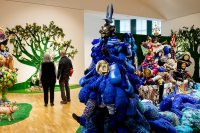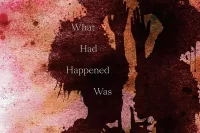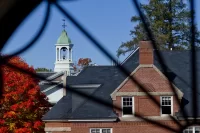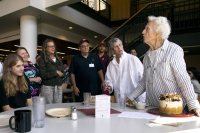
Abe '08 curates woodblock print exhibition at Museum of Art
![]()
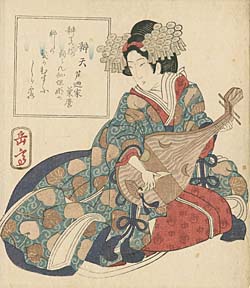 |
| “Bijin Playing a Biwa,” a woodblock print by Gakutei. Below: Gakutei’s “Oiran with Pipe.” Both are gifts of Douglas J. Macko ’65. |
Curated by a Bates senior, an exhibition of woodblock prints highlighting the roles, variety and importance of kimono patterns in the Japanese genre called “ukiyo-e” opens with a public reception at 7 p.m. Friday, April 4, at the Bates College Museum of Art, 75 Russell St.
The Kimono and Traditional Japanese Culture: Investigating Kimono through Ukiyo-e in the Bates College Art Museum Collection runs through July 19 in the museum’s Synergy Seminar Gallery.
Opening at the same time is the college’s annual Senior Art Exhibition, which shows through May 24 in the Bates Gallery.
Open to the public at no cost, the museum’s regular hours are from 10 a.m. to 5 p.m. Tuesday through Saturday. For more information, please call 207-786-6158 or visit the museum Web site.
Hisakiku Abe of Concord, Mass., assembled the kimono exhibit from the museum’s collection of ukiyo-e, which refers to the dominant form of artistic printmaking in Japan from the 17th into the 19th centuries.
The exhibition was spurred by a donation of 20 ukiyo-e prints by Douglas J. Macko, a member of the Bates class of 1965. Abe was chosen to process the new prints and assemble the exhibit because, in part, of her experience working in the Japanese art department at the Peabody-Essex Museum in Salem, Mass.
She looked through many different prints before discovering a strand that linked some of them together. “I was just looking at which prints would be the most visually appealing, and in a lot of them, the kimonos were the most vibrant part,” Abe says.
The exhibit consists of 11 ukiyo-e woodblock prints that depict kimonos and four actual kimonos that belong to Abe’s mother and grandmother.
“My parents are Japanese, but I was born here,” Abe says. “My mom and my grandmother are both very traditional and they own a lot of kimonos. So I’ve grown up seeing them wearing kimonos and I wanted to know more about it.”
When the prints were made, the kimono was an “everyday sort of dress,” says Abe. The kimonos are seasonal, so certain patterns, like flowers, are worn only at certain times of the year. Abe says that the kimono today is a more formal type of dress.
An art and visual culture major focusing on art history, Abe intensively researched and cataloged the Macko prints, including historical research on the kimono itself during the Ukiyo-e period. Assisted and guided by museum 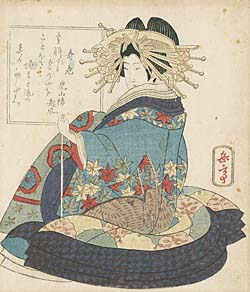 staff, she wrote up loan forms, wrote wall texts and generally was exposed to myriad practicalities of museum work.
staff, she wrote up loan forms, wrote wall texts and generally was exposed to myriad practicalities of museum work.
“Her work has given us an immediate gain in our understanding of these objects,” says Anthony Shostak, the museum’s educational curator. He adds, “After viewing hundreds of images, Hisa recognized that the prints could tell a story about social meaning woven into the images through kimonos.”
The exhibit allowed Abe to explore her own history. “I ended up finding I was a little more interested in Japanese culture than I had thought,” she says. “I think I grew up almost repressing it because of just having it all around me all the time. So I assumed that I didn’t really like it – and with all this research I’m finding that I really do enjoy it more.”
After Bates, Abe will attend the master’s program at Sotheby’s Institute of Art in New York, which focuses on the commercial aspects of art. “I’ve done a lot of museum work, and I haven’t really done the gallery side, so it’s my exploration of that.”
She says, “It was a great experience to be able to do this and bring together all my different backgrounds.”
The show is part of the “Students in the Vault Series,” where students use their distinctive combinations of course work, internships, socio-economic and ethnic backgrounds and other life experiences to research artistic objects and to think about them both creatively and critically.
